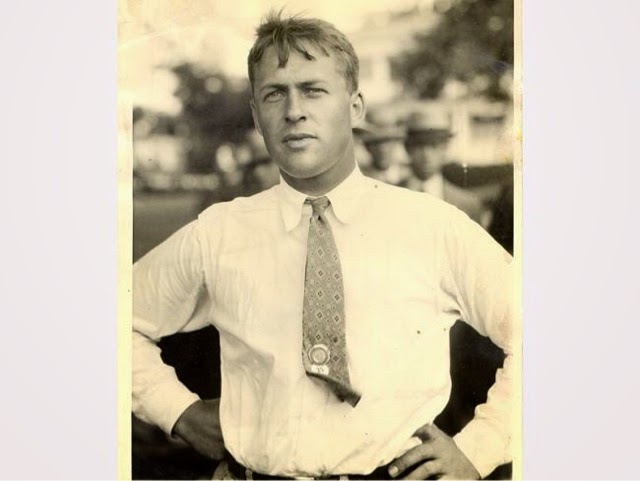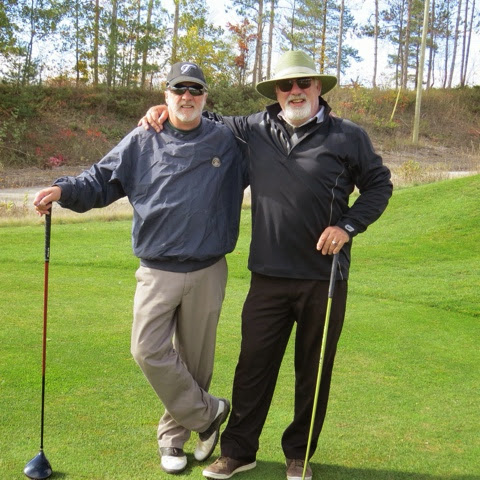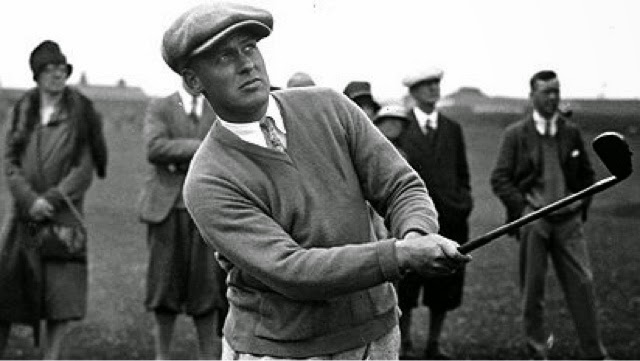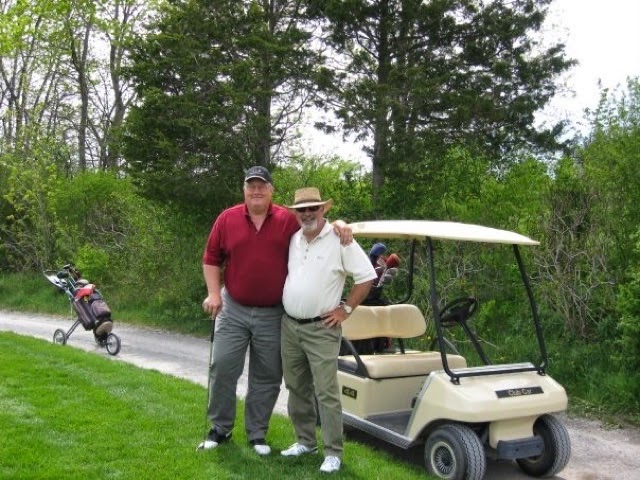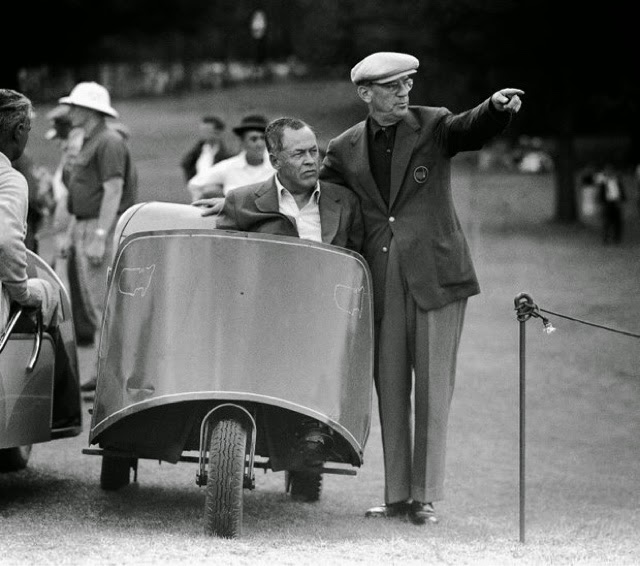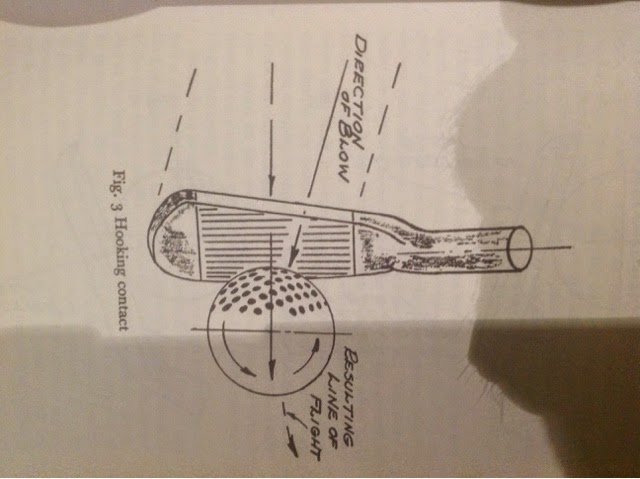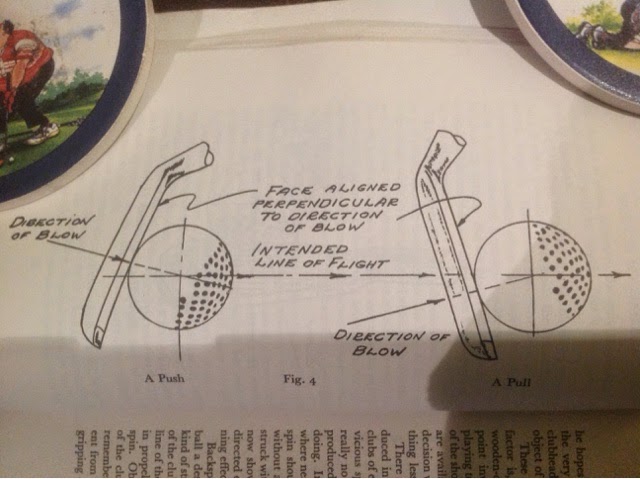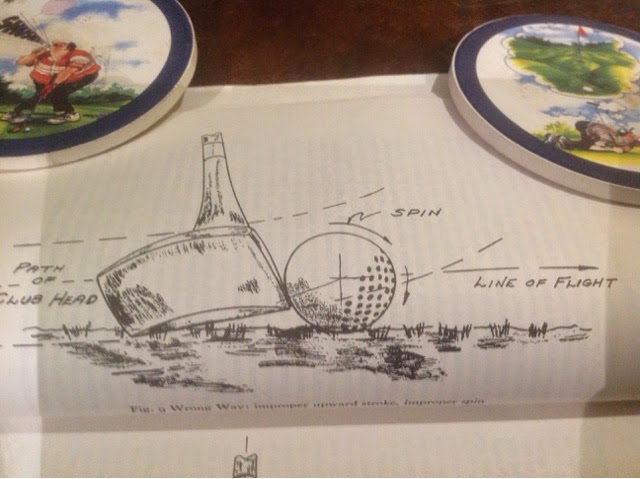This information contained no advice, or information involving swing mechanics. Therefore, it is completely safe for general consumption. It can do no harm; only good.
Golfers are always looking for "the Secret." Many thought Ben Hogan possessed it, and that this secret was some sort of mechanical move that guaranteed a good shot every time. There is, however, no one mechanical secret, no "magic move" that, once learned, will make every shot come off as we planned it. That is just a dream. But if there is a true secret to golf, it is the information Bobby Jones presents in this chapter. It is not, of course, really a secret at all. It is just something either not generally understood or, if understood, largely ignored by the majority of players and teachers alike as they often search for the mythical perfect swing, instead of the perfect strike.
In 1927, after Jones had shot a near perfect round of sixty six in the Southern Open at East Lake, a reporter referred to him as the Mechanical Man of Golf. Jones found this amusing and wrote: "How I wished it could have been made to fit!"
When offering the real reason for his superior play, Jones wrote: "I have always said I won golf tournaments because I tried harder than anyone else and was willing to take more punishment than the others. More immodestly, I will say now that I think a large factor in my winning was a greater resourcefulness in coping with unusual situations and in recovering from or retrieving mistakes."
Jim Barnes had offered Bobby some sage advice when he was in his seven lean years as a golfer. He told Bobby he would never win tournaments until he learned how to score when he was playing badly. Concerning this advice, Bobby wrote:
"I think this is what I learned to do best of all. The most acute, and yet the most satisfying recollections I have are of tournaments won by triumphs over my own mistakes and by crucial strokes played with imagination and precision when anything ordinary would not have sufficed. And I think I was able to do this because I had learned so well what a golf ball could be made to do and how it had to be struck to make it perform as I wanted it to... Of course, I learned these things by playing. I kept on hammering at that pesky ball until I found a way to make it behave... I didn't try different swings. I probably didn't know there were such things, or even a swing at all for that matter.
A kid growing up without a teacher but with a golf club in his hands may be under a handicap, but he has some advantages too. No one is trying to teach him to play. If someone should try to explain the golf swing to him, he would be completely baffled. Even more bewildered would he be by even the most elementary discussion of why a golf ball acts as it does. But he has plenty of time to learn these things for himself."
Bobby pointed out that it is easy to identify someone who began playing the game as a youngster by their "appearance of naturalness." He believed they look this way because they first thought of the game in terms of striking the ball. So, Bobby went on to explain, "they set about doing this (striking the ball) with no more self consciousness than we would associate with chopping wood, throwing stones, or beating rugs." Bobby was confident that "the adult golfer should approach the game the same way... In a few minutes study of the material in this chapter, he can learn as much about the possible means of controlling a golf ball as a boy can learn in years of play."
When commenting on how "uncomfortable, strained, unsure, sometimes even unhappy" the average golfer looks, Bobby thought "a great measure of his discomfiture is derived from his conscious efforts to follow prescribed routine, to look and move like someone else, or as he has been told." Bobby thought the average golfer, or indeed the golfer just learning the game would "present a more natural appearance if he should put his mind upon striking the ball, rather than upon swinging the club." When one considers the extent to which other teachers stress to their pupils the importance of the mechanics of the golf swing, rather than how to strike the ball, this is very different, even ground-breaking advice. Or, it would be ground-breaking if it hadn't already been written in 1959.
I think the following statement by Jones is vitally important to remember:
"No one can play golf until he knows the many ways in which a golf ball can be expected to respond when it is struck in different ways. If you think that all this should be obvious, please believe me when I assure you that I have seen many really good players attempt shots they should have known were impossible."
The following, admittedly very amateurish, photos capture the various drawings presented by Bobby to explain the sort of contact that produces a straight shot, a slice, a hook, etc.:
The first photo shows figure 1, the diagram depicting the ball being struck by the club moving precisely along the intended line of flight with the club face square to the target. In the absence of wind, Jones stated: "the only possible result is a straight shot directly on target. This is the ideal for most golfing situations."
Bobby went on to dispel a common misconception. He wrote:
"If you have ever been told that the clubhead should strike the ball while travelling from inside the line of flight to the outside, forget it. This advice may have been of temporary helpfulness on occasion when the player, in attempting to follow it, has corrected a natural tendency to hit across the ball from the outside. But the player who actually succeeds in hitting from inside-to-out more often finds himself plagued by a ducking hook."
The second photo shows figure 2, which depicts the slicing contact. In this case the club is moving from outside the line of flight to the inside with the clubface square to the target line, the result being a fade or a slice depending upon how outside the line to in the clubhead travels.
The third photo shows figure 3, which shows the hooking contact. In this case the ball strikes the inside half of the back of the ball causing a hook or a draw depending upon the degree to which the club is coming from the inside.
The fourth photo shows figure 4, which shows the cause of a pushed or pulled shot. In a pushed shot the club is coming from inside the target line and the clubface is square to the club path. For a pull to occur, the club must be travelling from outside the target line towards the inside, again with the face square to the direction of the strike.
Jones writes: "These are the basic conceptions which should be in the golfer's mind every time he looks at a ball in preparation for playing a shot. He must have decided where he wants the ball to go. He should have a picture in his mind of the flight he hopes to produce, and then he must swing his club with the definite and determined intention of having the clubhead meet the ball in just such a way. This should be the object of his intense concentration."
Jones went on to talk about the importance of spin as shown in pictures five and six. From picture number five we see the only way to strike a ball without producing backspin, or at least with minimal backspin. That is to essentially strike slightly up on the ball. This is what instructors would have us do nowadays with the driver, producing an optimal launch angle with low spin for maximum distance. Picture six shows the descending blow necessary to produce backspin. Bobby stresses here one important thing to remember when considering using backspin to stop a shot quickly. He reminds us that since "the spin is produced by the gripping effect between the club and the ball, the contact must be clean. Should the ball be lying in lush grass or clover so that these lubricating agents must interpose themselves between the two surfaces, it may not be possible to produce backspin. The player must be ever aware of this limitation, so that he may not rely upon backspin to stop a ball played from a heavy lie in rough or fairway."
Dealing with issue of spin and it's importance, Bobby writes: "At the risk of being dogmatic and tedious, I am going to say right here that a person can no more play golf without a thorough knowledge of these spin-producing and spin-denying contacts than he could play billiards without an appreciation of the capabilities and limitations of follow and draw and a general idea of how a spinning ball will come off the cushions, or play tennis without knowing how his chops and twists were going to act."
Jones goes on to speak of the effect of spin on the flight of the golf ball. It is more general knowledge in terms of why the golf ball reacts and flies the way it does. But once more, in summing up, Jones reiterates: "Knowing the possibilities of the various flight characteristics that we may be able to produce will enable us to visualize the kind of contact we should concentrate upon. The knowledge that the ball will fly as we hit it, and only as we hit it, should at least suggest to us that the most important thing in playing golf is hitting the ball."
At this point, Bobby proposes that the reader "obtain a golf ball and any sort of lofted iron club and begin straight away to fix these concepts in his mind. In his own living-room he can place the face of the club behind the ball, and without swinging, visualize the spinning effects which must result from various kinds of contacts. He may also give himself some very worthwhile lessons in arranging his feet and body position in such a way that he may know he is able to strike the ball along the line upon which he intends to project it."
The following excerpt from Striking the Ball is, in my mind and, more importantly, in the mind of Bobby Jones, the reason why this knowledge is so important to every golfer regardless of his ability:
"It is in this very way that a player should approach every shot he hits on the golf course, or even on the practice tee. Let him always decide first upon the result he wants to produce; second, upon the precise manner in which he desires to strike the ball; and then let him place himself before the ball in such a position that he knows he will be able to deliver the blow in this manner.
This is the obvious, direct, and uncomplicated way of going about playing a golf shot. It will always be many times more effective than any attempt to follow a prescription for placing the feet and adjusting the rest of the body posture. It will result in an easy fluidity because it is natural.
One may very easily and with great advantage carry this thing one step further. Indeed, for the best in performance, the player must keep in the forefront of his mind throughout the entire stroke this very clear picture of the precise manner in which he intends to strike the ball."
Bobby went on to describe his mental attitude when playing a tournament round: "Years ago I described the mental attitude I tried to attain in a tournament round as a concentration upon producing a desired result so intense as to preclude any possibility of concern with the manner of swinging. I liked to think of erecting a wall or other vertical plane containing the ball and my left eye, and then focus my entire concentration upon producing the desired result in front of the wall. I wanted to leave my swing to take care of itself. I was confident that the movement behind the ball would adjust itself to the proper striking."
Bobby continued by writing: "I was very certain that whenever I could achieve this detachment, my swing would slow down to its proper rhythm and its effectiveness would be restored. As so often happened, a game which had caused me concern in practice would be pulled together by the strain of competition, whereby anxiety was proved to be a more powerful force than the will."
"I cannot see," Bobby concludes, "how one may avoid the conclusion that any player must swing and play better when he makes every move of his stroke with the aim of getting himself into position to strike in a clearly defined way, and delivering the blow in this way."
As sort of a postscript, Bobby finishes this chapter by addressing a shot that the average golfer "needs most," namely the wood shot from the fairway. Pictures 7 and 8 show the right and wrong way to strike the ball. This shot must be played as a backspin shot. Rather than trying to get under the ball and lift it in the air, the ball should be struck with a slightly descending blow which will impart the necessary backspin to get the ball in the air.
To summarize, Bobby Jones imparts the knowledge in this chapter that, if really studied, absorbed, and then applied, can literally improve our golf game overnight. Understanding how a ball must be struck to achieve the result we are looking for and then making the strike the object of our intense concentration on every shot will change our game. Knowing that a ball must react in a consistent way if struck a certain way should give us confidence, and focussing on the strike will hopefully free us from too much concern about swing mechanics, when we should be concentrating on the shot.
I suggest that most of us would stand to gain from Bobby's timeless advice. If we would grab a club and a ball and, without swinging, focus on the different ways a ball must be struck to achieve a straight shot, a fade or slice, a hook or draw and a spinning shot; and if we were to take notice of how we would naturally approach and stand before the ball to achieve that strike, and then take this approach to the course, I suspect our game would improve. We might just become a ball-striker instead of a mechanical club-swinger. I don't guarantee it, because a guarantee from me and a dollar wouldn't get you a coffee these days. But Bobby Jones pretty much guarantees it, and, coming from him, that's worth something.





